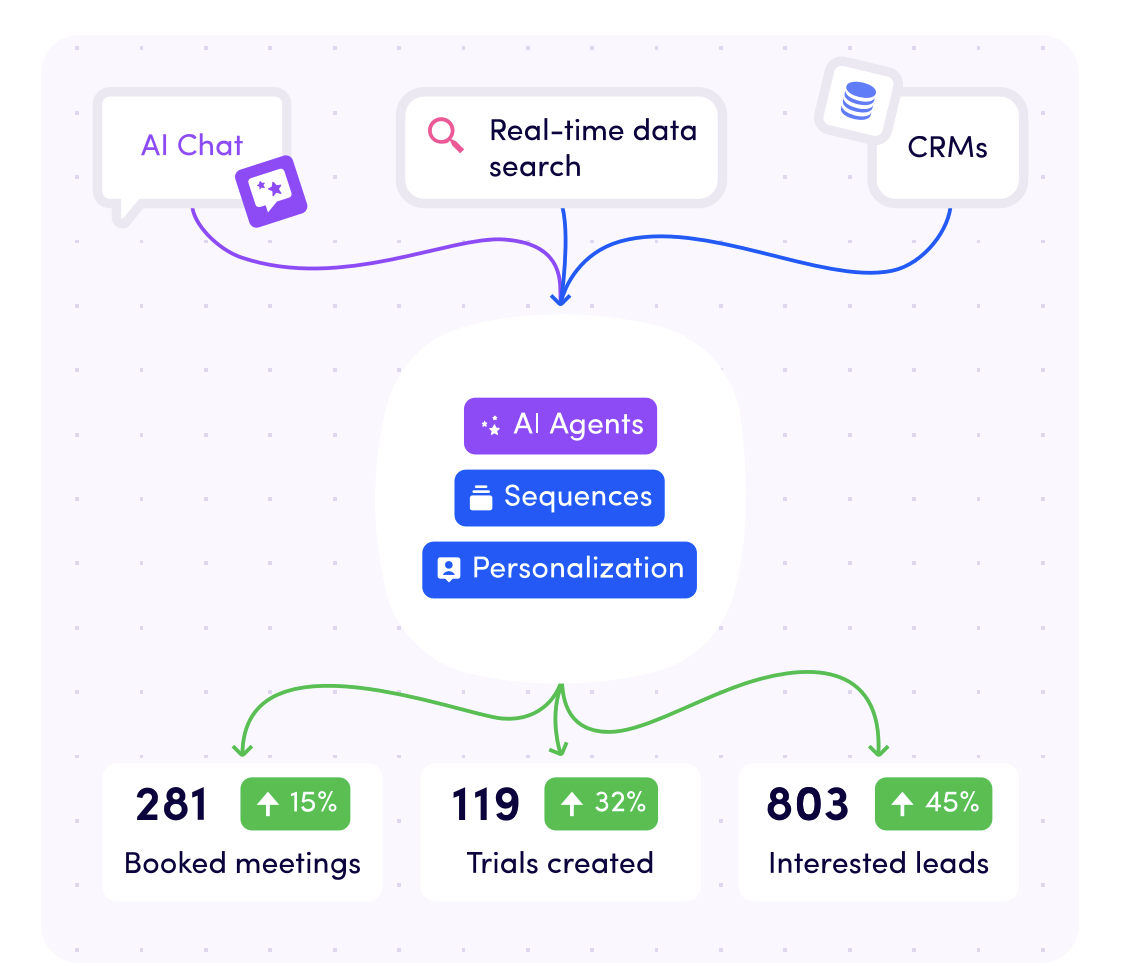Did you know that according to a study by Proxima, over 60% of marketing budgets are wasted? This is because the company has wrong or unrealistic long and short term marketing goals.
A lack of customer data and a data-driven approach is also one of the major reasons why marketing objectives fail.
Strategy is an important factor in marketing success. But strategic marketing is often focused on the long term. It’s theoretical and full of ‘plans’.
Operational marketing is kind of the A-team of brand success. It focuses on action. It helps to take proactive steps towards strategic goal completion. Let’s take a look at how that works.
JUMP TO SECTION
1. What is operational marketing?
2. Key elements of operational excellence
3. The Ps and the Cs
4. The tools of an operational marketer
5. Want to know more about marketing?
6. FAQs
What is operational marketing?
Operational marketing helps to increase short-term wins thereby assisting in the completion of long-term marketing objectives.
It concerns activities such as direct marketing, advertising, digital marketing, outbound marketing, and inbound marketing.
When people talk about moving from A to B, operational marketing is the B in this equation. It is based on the strategic marketing objectives gathered through extensive data reports.
If that sounds a little ‘management speak’ to you, don’t worry. It gets easier.

“93% of B2B business owners say the marketing operation function is important.” - B2Bmarketing.net

“49% of marketing teams have at least one marketing operations leader in place.” - Gartner
Before you start with anything, these three things needs to be in place:
- Market research (think: voice-of-customer, demographics, psychographics, etc.)
- Long and short term objectives generated through strategic marketing plans
- Creation of action points by applying operational marketing techniques
Think of a car for a second. It can have a chassis, doors, wheels, and even a steering wheel. But without an engine, the car isn’t ‘operational’. There’s nothing to drive the goals of the car, a.k.a. getting you to where you need to go.
Likewise, if your marketing isn’t operational, it’s just a bunch of guys and girls sipping coffee, sitting in a stuffy meeting room drawing up plans. Nothing happens.
The other way gets you the exact same result. An engine without a car doesn’t help you either. Strategy and Operational Marketing go hand in hand.
But what exactly makes up the core of operational marketing? This comes down to a series of five core elements. Do this right, and your new business endeavour might end up a success.
Key elements of operational excellence
To start with, the first core element of operational marketing is all about having a strategy-based and goal-oriented approach.
As we mentioned before, operational status can’t be achieved with the right foundation. You need something to work with.
According to the folks at Plannuh, these are the first steps you should take to start with your goal-oriented planning:
- Define your goals, milestones, metrics, and targets
- Align with your own strategy
- Define any constraints your plans might have
- Build campaigns around the data you’ve collected
We have to warn you upfront, don’t go crazy on the goal-setting. Stick to about four to six major goals.
Too many and you’ll never achieve them, too few and you might miss out on the right opportunities.
Once we’ve reached the stage where we can start measuring the effect our campaigns have, we can start optimising them.
This leads us to discoveries such as knowing our marketing filter is too tight, rejecting too many qualified leads, or perhaps letting too many unqualified leads through.
This leads to an important step in successful operational marketing: knowing the entire marketing system.
Too often businesses focus on one thing, getting leads. But the little cogs in the machine that make everything lead up to a sale are left to rust.
Working in systems is a good start to making marketing operational. The above framework shows all the elements of such a system.
But measuring something is pointless if you don’t know what makes up a success. That’s why you need to have KPIs to be able to evaluate the incoming data.
The Ps and the Cs
To make the most of this data and ensure strategic goals are met, it's important to look at the Ps and Cs.
You might already be familiar with the 4 Ps - Product, Price, Place, and Promotion. These are one of the many main levers for operational marketing.
But the 4 Ps have evolved to keep up with current demands and expanded to the 7 Ps. The brainiacs of marketing added these to the list:
This concerns customer relationship management, complaints, and training needs.
This involves company procedures, marketing performance analysis, best practices, and so on.
Think of all the things influencing the customer’s perception of the product or service being marketed. Things such as layout, smell, sound, design, etc.

But, we’re not done with the abbreviations yet. As an operational marketer, you’ll also be faced with 4 Cs. These are the following:
Being able to respond to the needs and desires of the consumer in the best possible way is a recipe for success.
Something your boss will probably text you on a Sunday morning at 7 AM is “How about that ROI?”. That’s the return on investment part of any marketing operation. Will the revenue outweigh the paid campaign costs?
Making the consumer’s shopping experience as comfortable as possible. Make their life easier. Understand what your customer needs.
Scroll through any list of negative reviews and you’ll often find quotes like “Customer service is garbage, doesn’t respond”, or “False advertising”. Being able to clearly communicate with your customers creates loyalty.
The tools of an operational marketer
Let’s talk about making things happen. Operational marketing is about action after all.
There are several tools at your disposal to ensure proper marketing operations. We’ve mentioned them briefly before. Now we’ll zoom in on them.
Advertising
This is where most of your lead generation happens. The ‘Mad Men’ of the marketing mix.
You can practically advertise anywhere, but keep the ROI and budget in mind. You could potentially show up with your brand on TV, radio, billboards, brochures, Instagram, Twitter, newspapers, you name it.
But remember that your advertising campaigns should always lead to the completion of strategic marketing goals.

If your goal is to attract people in their mid 20s who like animals, don’t go advertising to meat eaters in their late 50s.
Sometimes, getting leads might not even be the goal of the advertisement. It might be awareness, engagement, or simply informing the customer.
Direct Marketing
The more ‘direct’ approach. Think of telemarketing, door-to-door sales, even coupons might do the trick.
It’s a more connective way of doing marketing. There’s a face and voice involved. You’re communicating directly with a chosen target group.
Digital Marketing
The brother (or sister) of direct marketing. It’s everything marketing, but digitally.
Think of websites, social media, email, and even SEO techniques. The operational marketing strategy will surely involve a digital approach in this day and age.
Inbound and Outbound Marketing
To make sure the strategic goals are achieved, operational marketing can make use of two types of getting leads, outbound and inbound.
With outbound marketing, you reach out to a potential lead through email sequences for example. Cold mailing is a common technique with this.
When adopting an inbound strategy, you create authority and credibility through the publishing of blog articles, social media networking, or hosting podcasts. Customers will buy from you on their own initiative because they trust in you and your brand.
Want to know more about marketing?
Becoming an efficient operational marketer means you need to be comfortable with various specialisations within the marketing mix.
If digital marketing caught your eye, we’re offering a course that’ll help you to maximise your impact online. But knowing the ins and outs of growth marketing is just as important.
Hover over to our growth marketing course and take another step to becoming the best operational marketer you can be.
Like we said at the start, working with data is also extremely important when it comes to operational marketing. If you agree, and we hope you do(!), visit our data visualisation course and learn how to present data to your team and bosses without making their heads spin.
And remember, marketing is all about experimentation. There’s only winning and learning.
Now get out there and ace some campaigns!
FAQs
Operational Marketing vs. Strategic Marketing?
The main difference between operational marketing and strategic marketing is their focus and scope.
Operational marketing is focused on short-term revenue generation: advertising, pricing, promotions, and sales management.
Strategic marketing is focused on long-term growth and value creation: market research, product development, brand building, and customer segmentation.
What is an Operational Marketing Plan?
An operational marketing plan is a detailed outline of the specific tactics and activities a company uses to achieve marketing objectives.
It includes marketing channels, target audience, messaging, content, and success metrics. This plan provides a roadmap for execution and helps ensure marketing goals are met.
What are the characteristics of operational marketing?
Operational marketing is characterised by a focus on short-term goals, implementation of tactics, and tactical decision-making. It involves executing marketing plans, managing marketing campaigns, and optimizing performance metrics. It relies on market research and customer feedback to drive decision-making and prioritise activities for achieving business objectives.
















